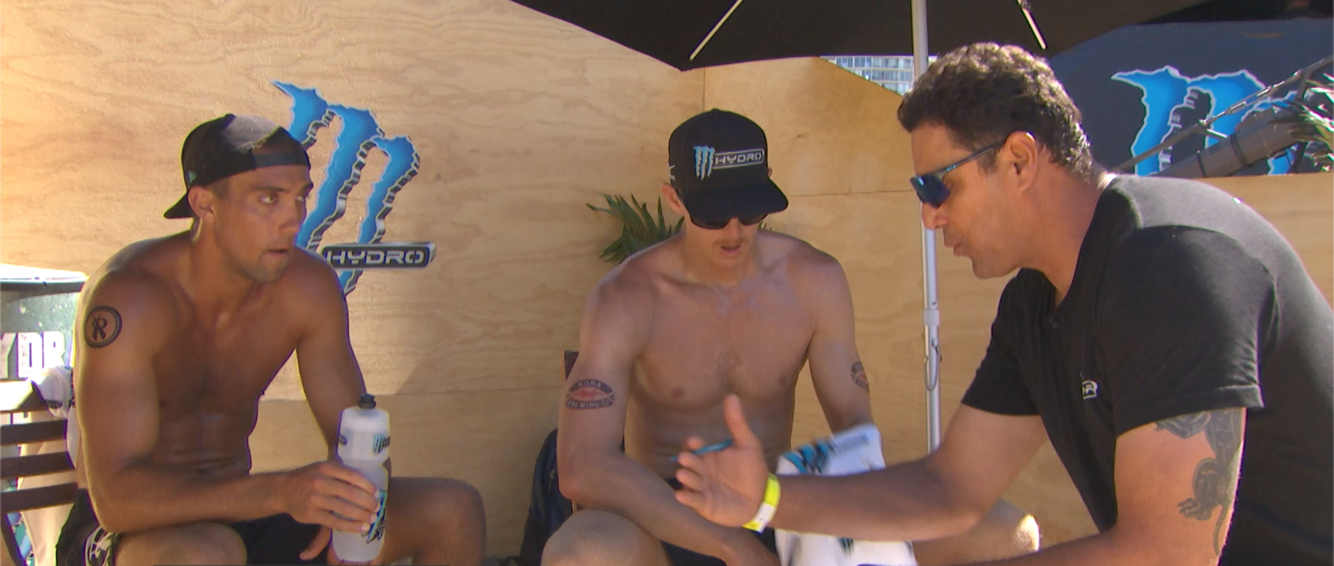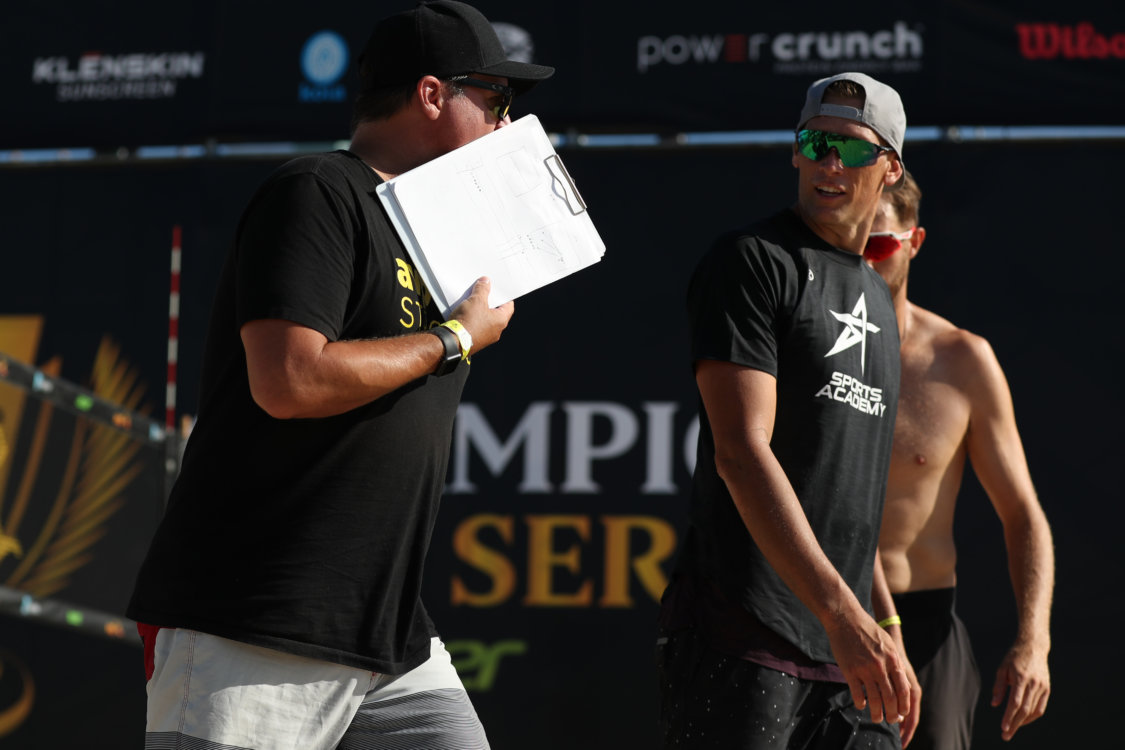Beach volleyball is an extremely tactical game, often requiring equal parts brains to brawn. We have a whole series called Strategy Chat, giving athletes the platform to show how they break down the game in their own way. To be good, you have to learn the ins and outs of strategy and technique. Most of us don’t get there on our own.

Coaches are vital to mastering the game. To move through the tiers, an outside source of wisdom, technique, and scouting is essential. Basically, no one on tour who makes it to Championship Sunday regularly does so sans coach.
It’s a Catch-22, of course. Coaches take money, winning earns you money, coaches help you win, but before you win, you have no money to invest in coaching. It’s a vicious cycle, one that Tiers 2-4 are familiar with and have (mostly) accepted. We all want coaches; the best are expensive. There’s a threshold that cannot be passed without professional instruction.
Because most teams all rep coaches, there are guidelines in place for their tournament input and conduct. But 2020, along with its other curveballs, brought changes to the AVP coaching rules.
Some have been abolished, some added, and some that still stand. Though the AVP Player Handbook: Coaches is a riveting read… I’ll summarize it for you. Standing rules in black, new rules in bold, and my colorful commentary below.
Coaching Policy
- Coaches are allowed to offer instruction during any dead ball (after the whistle, before the serve).
- THIS IS HUGE! No other professional volleyball tour allows this.
- Coaches may walk and talk with their athletes during side switches.
- The only time a coach can interact with a ref is to call a timeout.
- Again, this is also significant. The art of calling a timeout is a skill in itself. After many matches, I’ve kicked myself for not calling a timeout at a crucial point. Coaches are the best at seeing the game objectively and knowing when you need a mental break.
- Coaches must be sitting in or kneeling by the players’ box of the same side of their players, and they must switch sides at the same time to prevent sign stealing (blocks, serving zones, etc.)
- During warmup, coaches are allowed to remain until 7 minutes before the first serve (after the referee’s coin toss). The only exception is when both teams have a coach and all four athletes agree that coaches may remain.
- Coaches must dress appropriately.
- I love that the handbook expressly states that bathing suits and no shoes still fall within appropriate boundaries. At a minimum, they have to wear a shirt. We’re civilized over here.
- They’re not allowed to go onto the court (unless for injury), talk to the refs, or talk to opponents. Now that coaches are allowed to talk to their players in between points, there are more rules about delays of game and attempting to influence officials under the guise of coaching.
- I find this hilarious, and if a coach is witty enough to both coach and scold a ref, I’d like to see it. But I get why it’s a rule.
- Some coaches have more than one team in an AVP tournament. Sometimes, both teams play at the same time. A coach is allowed to leave one match to go to the other only once.
- There’s no limit to the number of teams a coach has, but teams can only have one coach.
- An individual cannot play and coach in the same AVP event, including the Qualifier. For example, John Smith cannot play in the Thursday MBO Qualifier and then show up on Friday to coach Bob and Joe. But if John decides to opt out of playing during the next tournament in Chicago, he’ll eligible to coach Bob and Joe.
- Coaches must never go into the referees’ tent to socialize, eat, or schmooze.
- There are other typical rules such as betting, conduct, and so forth.
- The interesting part of these rules is the players are responsible for their coach. Unlike in college, we’re adults. Our coaches aren’t spokespeople for us; we’re held culpable for their misconduct.
- I love this. It puts the onus on the players to pick trustworthy coaches. Not that we’ve had any problems in the past (that I know of), but it’s a smart check on coach power and player deniability.
Though these aren’t all the rules, they’re the ones that matter most. The ones that both mirror international tours and make the AVP wholly different. That’s what the AVP does; we trailblaze new ideas to see if they work. And this one seems to be working.

Scott Davenport, a high-level AVP coach, talked about his thoughts on the new rules in one of my recent articles. Though I didn’t play in the Champions Cup Series, I could tell the new rules were a massive game-changer. Getting real-time advice from your trusted coach is invaluable.
Plus, as I mentioned before, coaches ain’t cheap. Before, your coach could only warm you up, help you scout, and provide instruction during timeouts and between sets. Though their presence was still super helpful, having a steady stream of guidance and remediation could be the difference between a win and a loss. The new rules just upped the importance of AVP coaches; it’ll be fun to see how this influences the level of play on tour.